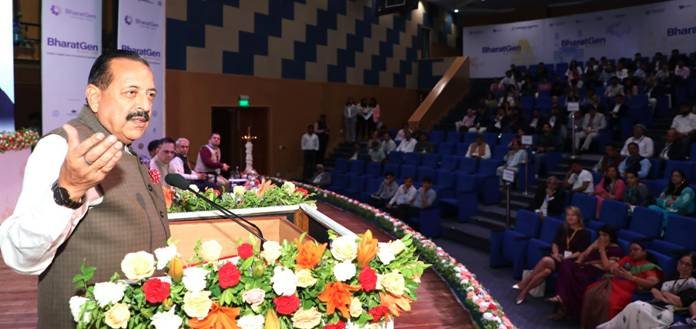BharatGen aims to revolutionize India’s AI development
Minister of State for Science & Technology Dr Jitendra Singh has launched ‘Bharat Gen’, India’s first-of-its-kind, indigenously developed, Artificial Intelligence (AI) based, government-funded, Multimodal Large Language Model (LLM) for Indian languages.
Speaking at the launch on 2 June “BharatGen Summit”—India’s largest Generative Artificial Intelligence (AI) and LLM summit and hackathon, he said the AI-based LLM was developed under the National Mission on Interdisciplinary Cyber-Physical Systems (NM-ICPS) and implemented through TIH Foundation for IoT and IoE at IIT Bombay.
“BharatGen aims to revolutionize AI development across India’s linguistic and cultural spectrum,” he said.
The initiative is supported by the Department of Science and Technology (DST) and brings together a robust consortium of leading academic institutions, experts, and innovators.
Dr Jitendra Singh described BharatGen as a “national mission to create AI that is ethical, inclusive, multilingual, and deeply rooted in Indian values and eothos”.
The platform integrates text, speech, and image modalities, offering seamless AI solutions in 22 Indian languages.
“This initiative will empower critical sectors such as healthcare, education, agriculture, and governance, delivering region-specific AI solutions that understand and serve every Indian,” said Dr Singh.
Recalling a success story from his own constituency, he spoke about AI-powered telemedicine services where an AI doctor communicates fluently in the patient’s native language.
“It not only builds trust but has a placebo-like psychological effect, enabling better care in remote regions connected with superspeciality hospitals across India,” he noted.
Dr Jitendra Singh hailed India’s AI progress as a global benchmark, including CPGRAMS, now studied by several countries as a model grievance redressal system.
Dr Jitendra Singh highlighted the transformative role of Generative AI in grassroots governance, citing the integration of multilingual feedback systems into platforms like CPGRAMS to enhance citizen engagement and grievance redressal.
He underscored the inclusive vision of NEP 2020, which promotes interdisciplinary learning by enabling students to combine technical and humanities disciplines, thus enhancing their employability and innovation potential.
The Minister celebrated the success of over 3,000 Agri-tech StartUps, particularly those pioneering initiatives like lavender cultivation in Jammu & Kashmir, as evidence that innovation thrives beyond metros and IT sectors.
The summit also witnessed a significant MoU exchange ceremony aimed at deepening collaboration across government departments and research hubs.
The launch of the Generative AI Hackathon 2025 marked a major step in engaging student innovators to solve real-world problems through AI. The BharatGen initiative is being executed through a network of 25 Technology Innovation Hubs (TIHs), four of which have been upgraded to Technology Translational Research Parks (TTRPs). The Mission’s four pillars include technology development, entrepreneurship, human resource development, and international collaboration. Fiinews.com









